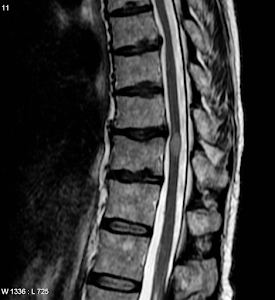Trapped Within: Exploring Locked-In Syndrome and the Mysteries of Neuroanatomy

Locked-In Syndrome A person with locked-in syndrome experiences quadriplegia and bulbar palsy due to damage to the brainstem though cognition and vertical eye movements are preserved in many patients. The condition's survivors frequently suffer from crippling motor loss, although early diagnosis, supportive care, and rehabilitation have been found to improve people's quality of life. Locked-in syndrome is caused by damage to a specific part of your brainstem known as the pons. Patient Presentation Quadriplegia, bulbar palsy, and lack of sensation throughout the body as a result of injury to the brain stem, most often the anterior pons. Patients with the syndrome typically retain their classically maintained cognition, hearing, blinking, and vertical eye movement. Types of locked-in syndrome: Classic form: Complete immobility, but one can move their eyes vertically, blink and maintain your usual cognitive abilities. Incomplete form: In this type of locked in syndr...



